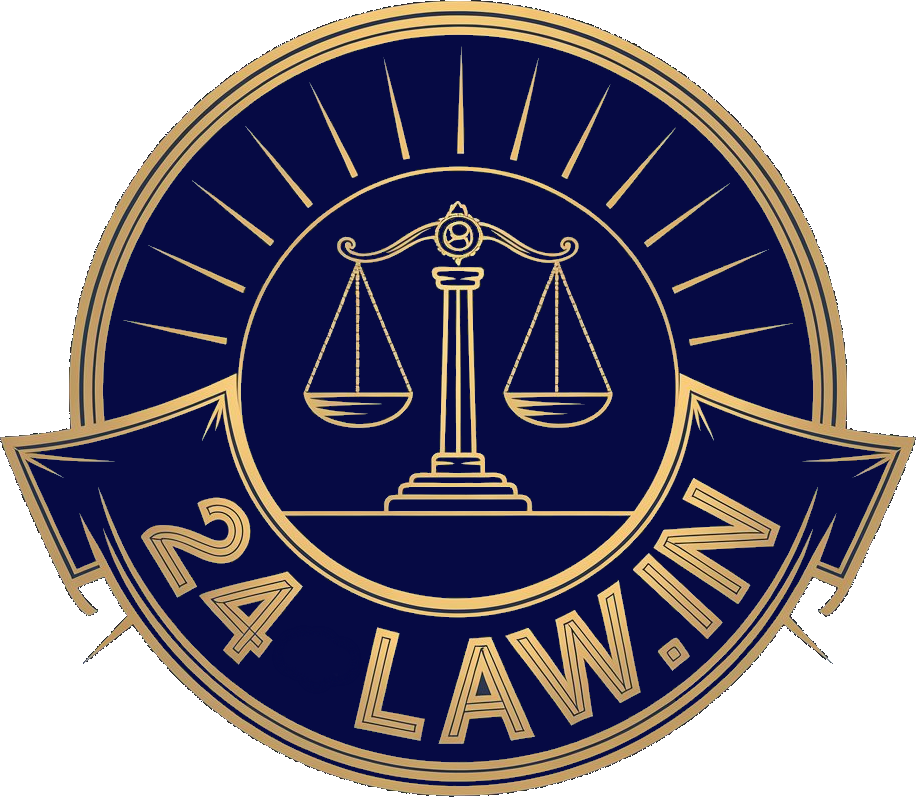Kerala High Court Directs Action To Decongest East Fort | Orders Measures For Pedestrian Safety And Bus Bay Relocation
- Post By 24law
- August 5, 2025

Safiya Malik
The High Court of Kerala Division Bench of Chief Justice Nitin Jamdar and Justice Basant Balaji issued a series of binding directives aimed at mitigating the long-standing pedestrian safety concerns and traffic congestion in the East Fort area of Thiruvananthapuram. The Bench ordered the implementation of both immediate and long-term measures following consensus among state agencies.
The Court mandated timelines for the installation of pedestrian infrastructure, enforcement actions, and decision-making on more extensive urban planning interventions. Stating inaction despite prior studies and proposals, the Court directed that initial measures like footpath repair, installation of guard rails, and construction planning for foot overbridges be commenced and completed within specific timeframes. The Bench stated that the lack of administrative will must no longer delay essential urban safety reforms and instructed authorities to initiate enforcement and infrastructure improvements as per the findings of earlier studies and interdepartmental meetings.
The petition, filed as a Public Interest Litigation, addressed the worsening traffic conditions and increasing risk to pedestrian safety in the East Fort area, a central hub of Thiruvananthapuram. The petitioners, residents of the locality, stated that the region houses significant institutions such as the Sree Padmanabha Swamy Temple, a busy city bus terminal, and a commercial market, leading to high pedestrian and vehicular density.
It was alleged that around 800 public transport buses and 100 private buses operate daily in this area, carrying nearly two lakh passengers and around one lakh temple devotees. The petitioners submitted that due to the high volume of bus maneuvers and constant pedestrian crossing, numerous fatalities have occurred. Despite repeated complaints, they claimed that the concerned administrative authorities had shown apathy.
The petitioners sought judicial intervention to direct the authorities to take immediate remedial measures, including the construction of foot overbridges equipped with escalators for pedestrian safety. The petition was supported by previous studies, including a comprehensive survey by the National Transportation Planning and Research Centre (NATPAC), which proposed infrastructural and enforcement solutions.
The Court was apprised that NATPAC had, in its Annual Report 2016-17, identified East Fort as one of the three most pedestrian-intensive areas in the city, alongside Cotton Hill Girls Higher Secondary School and Vazhuthakkad-Pattom-Kesavadasapuram Road. NATPAC had proposed the construction of three foot overbridges with escalators, pedestrian guard rails with limited openings, designated bus bays, and street vendor relocation, among other recommendations.
The Regional Transport Officer (Enforcement) submitted a detailed report recommending a host of safety measures including marked crosswalks, well-maintained sidewalks, raised intersections, speed humps, clear signage, and the regulation of bus parking through enforcement mechanisms. The report also noted deficiencies such as double parking, overcrowding in bus stands, obstructed lanes, lack of dedicated bus bays, and uncoordinated bus schedules.
The Court was informed that in compliance with an interim order dated 21 March 2025, meetings were held involving the Transport Commissioner, Public Works Department officials, Road Safety Commissioner, KSRTC, and other relevant officers. The meeting, chaired by the Transport Minister on 25 June 2025, reviewed the NATPAC proposals and resolved to implement the Transport Commissioner’s recommendations.
Recommendations included:
- Implementing pedestrian safety standards like crosswalks, sidewalks, traffic-calming measures, and signage.
- Allocating separate bus parking areas.
- Creating dedicated bus bays.
- Providing passenger waiting areas.
- Digitally coordinating bus schedules.
- Enforcing traffic rules strictly, including penalising unauthorized bus parking.
The Minister directed that the Transport Commissioner convene a meeting to investigate illegal private bus operations terminating at East Fort. Measures such as fine realization, permit cancellations, and "No Parking" enforcement were proposed.
A joint site inspection was conducted on 27 June 2025 by officials from the Design Wing and the Kerala Road Fund Board (KRFB). It was noted that many proposals of NATPAC were relevant and essential. The Chief Engineer (Design) submitted a report including a sketch, reiterating the need for:
- Road widening to a six-lane configuration.
- Shifting of the bus stand.
- Land acquisition for shelters.
- Construction of pedestrian guard rails.
- Central median barricading.
The report further stated the congestion caused by KSRTC buses parked near Gandhi Park and in front of Kottamathil, suggesting relocation of the depot. The construction of two additional foot overbridges — one near the Chala Road entry after the KSRTC petrol bunk, and another near Pazhavangadi — connected via a skywalk, was recommended.
The Division Bench recorded, "The Petitioners have filed this Public Interest Litigation, highlighting the traffic congestion around the East Fort area of Thiruvananthapuram City." It was noted that, "A large number of individuals depend on bus schedules for their travel to and from the East Fort area."
The Court observed that NATPAC had identified East Fort as a high pedestrian zone in its 2016-17 report. The Bench recorded, "As high pedestrian areas are located on the busy road corridors, the pedestrian movements severely affect the vehicular movement on the main roads apart from putting the pedestrians especially, school children at high safety risk."
Referring to the Regional Transport Officer's report, the Court noted, "Marked crosswalks should be provided at all major intersections, equipped with pedestrian signals and countdown timers." and "Well-maintained sidewalks should be installed on both sides of the road to provide a safe walking space." It was also recorded that such installations might "require the demolition of shops and evacuation of street vendors in some areas."
The report further stated that "The double-row parking of buses reduces the available space for other vehicles, causing congestion and delays, and frustrating commuters." The Court referred to the recommendation for "constructing dedicated bus bays to allow buses to pull over and discharge or pick up passengers without disrupting traffic flow."
The Bench noted that several meetings had already taken place involving key stakeholders, and that an action taken report was submitted by the Joint Secretary, Public Works Department. Quoting from the Minister's meeting minutes, the Court recorded, "Private buses are also ending the services at Kizhakkekkotta and such a practice by the private buses are illegal and resulting in traffic blocks."
The Chief Engineer (Design) observed that "strict enforcement and modification and relocation of the bus bays will ensure smooth six lane traffic." The joint inspection also pointed out that "the primary cause of congestion is the existing bus bay in front of 'Kottamathil' and the unauthorized occupation of approximately two-lane width of the carriageway by KSRTC."
On foot overbridges, the Court recorded, "Safe pedestrian movement requires effective separation from vehicular traffic." and stated, "Two additional foot overbridges... are recommended to significantly improve pedestrian safety."
On guard rails, it was noted that, "Continuous hand rail has been installed... Any damaged or missing section of the guard rail need to be rectified so that continuous pedestrian guard rail along the entire length of footpath is available."
The Court remarked, "Despite raised medians intended to discourage crossing, pedestrians are observed crossing at several locations." and recommended continuous barricades to discourage unsafe crossings.
The Court issued binding directions categorising them as initial and long-term measures. The Bench directed: "As regards the repairs of the damaged infrastructure, i.e., signages, markings and footpath tiles, to be repaired and replaced, the same shall be done within a period of four months."
It further ordered: "The pedestrian guard rails, as suggested in the memo, be installed within a period of six months." and added, "The process for constructing two additional foot overbridges... be initiated within a period of two months."
On enforcement measures, the Court directed: "The Transport Commissioner, if not already issued the instructions, will issue necessary instructions to all the concerned officers, within a period of two weeks, monitoring regular traffic movement." The order added, "The Respondents will have to indicate a viable alternative to address the issue of KSRTC buses being parked on the road for longer duration."
Regarding broader planning decisions, the Bench stated: "As regards the long-term measures, such as relocation of bus stand, acquisition of land, removal of shops and encroachments, a considered decision regarding the feasibility of these measures be taken within a period of two months."
Advocates Representing the Parties:
For the Petitioners: Sri. P. Rahul, Smt. Bindu S., Smt. Abhina L., Smt. Anushka Vijayakumar
For the Respondents: Sri. K.V. Manojkumar, Senior Government Pleader; Sri. P.C. Chacko (Parathanam); Sri. Suman Chakravarthy, Standing Counsel for Thiruvananthapuram Corporation; Sri. Riji Rajendran, Standing Counsel for NATPAC
Case Title: C.A.N. Subramoniya Sarma & Ors. vs State of Kerala & Ors.
Neutral Citation: 2025: KER:56696
Case Number: W.P(C) No. 39438 of 2024
Bench: Chief Justice Nitin Jamdar, Justice Basant Balaji




